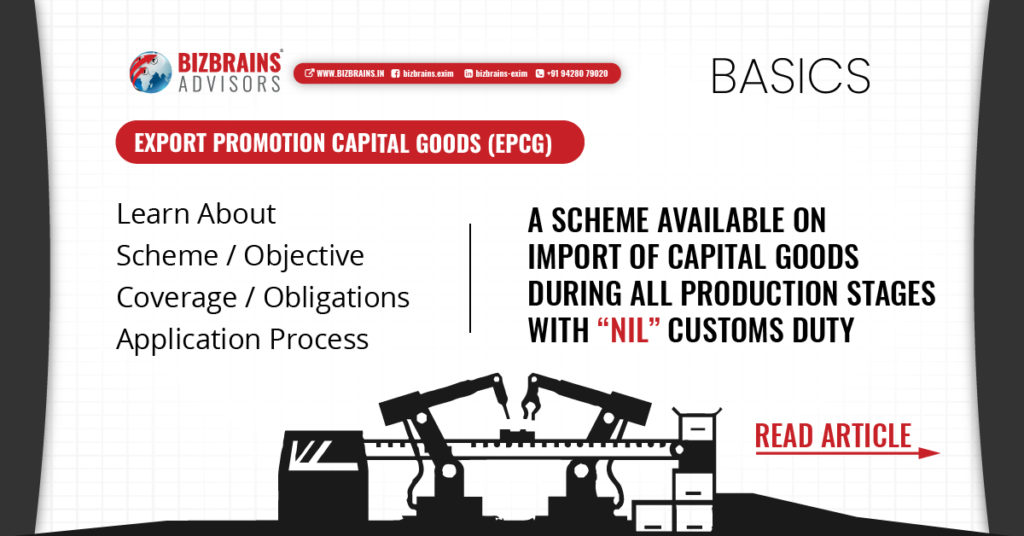
Export Promotion Capital Goods (EPCG) scheme allows import of capital goods including spares for pre production, production and post production at zero duty subject to an export obligation of 6 times of duty saved on capital goods imported under EPCG scheme, to be fulfilled in 6years reckoned from Authorization issue-date. EPCG scheme covers manufacturer exporters with or without supporting manufacturer(s) / vendor(s), merchant exporters tied to supporting manufacturer(s) and service providers.
As Part of Back to Basics - Let's Explore more about EPCG
Export Promotion of Capital Goods, what is it?
Let's start with basics, Definition and scope of the Scheme
In simple words, Export Promotion Capital Goods (EPCG) scheme is available on the import of capital goods during the pre-production, production, and post-production stage with nil customs duty.
The scheme is applicable when the imported goods are imported and allowed under various allowed lists discussed further in this article.
EPCG Scheme Objectives
The objective of the EPCG Scheme is to facilitate import of capital goods for producing quality goods and services and enhance India’s manufacturing competitiveness.
EPCG Scheme Scope
Scheme allows import of capital goods (except those specified in negative list in Appendix 5 F) for pre-production, production and post-production at zero customs duty. Capital goods imported under EPCG Authorization for physical exports are also exempt from IGST and Compensation Cess up to 01.10.2018i only, leviable thereon under the sub-section(7) and subsection (9) respectively, of section 3 of the Customs Tariff Act, 1975 (51 of 1975), as provided in the notification issued by Department of Revenue. Alternatively, the Authorization holder may also procure Capital Goods from indigenous sources in accordance with provisions of paragraph 5.07 of FTP.
Capital goods for the purpose of the EPCG scheme shall include:
(i) Capital Goods as defined in Chapter 9 including in CKD / SKD condition thereof;
(ii) Computer systems and software which are a part of the Capital goods being imported;
(iii) Spares, moulds, dies, jigs, fixtures, tools & refractories; and
(iv) Catalysts for initial charge plus one subsequent charge.
- Import of capital goods for Project Imports notified by Central Board of Excise and Customs is also permitted under EPCG Scheme.
- Import under EPCG Scheme shall be subject to an export obligation equivalent to 6 times of duties, taxes and cess saved on capital goods, to be fulfilled in 6 years reckoned from date of issue of Authorization.
- Authorization shall be valid for import for 18 months from the date of issue of Authorization. Revalidation of EPCG Authorization shall not be permitted.
- In case Integrated Tax and Compensation Cess are paid in cash on imports under EPCG, incidence of the said Integrated Tax and Compensation Cess would not be taken for computation of net duty saved provided Input Tax Credit is not availed.
- Import of items which are restricted for import shall be permitted under EPCG Scheme only after approval from Exim Facilitation Committee (EFC) at DGFT Headquarters.
- If the goods proposed to be exported under EPCG authorization are restricted for export, the EPCG authorization shall be issued only after approval for issuance of export authorization from Exim Facilitation Committee at DGFT Headquarters.
EPCG Scheme Coverage
Coverage of the scheme or who are eligible for the scheme:
- EPCG scheme covers manufacturer exporters with or without supporting manufacturer(s), merchant exporters tied to supporting manufacturer(s) and service providers.
- Name of supporting manufacturer(s) shall be endorsed on the EPCG Authorisation before
- installation of the capital goods in the factory/premises of the supporting manufacturer (s). In case of any change in supporting manufacturer (s) the RA shall intimate such change to jurisdictional Customs Authority of existing as well as changed supporting manufacturer(s) and the Customs at port of registration of Authorisation.
- Export Promotion Capital Goods (EPCG) Scheme also covers a service provider who is designated / certified as a Common Service Provider (CSP) by the DGFT, Department of Commerce or State Industrial Infrastructural Corporation in a Town of Export Excellence subject to provisions of Foreign Trade Policy/Handbook of Procedures with the following conditions:
- Export by users of the common service, to be counted towards fulfillment of EO of the CSP shall contain the EPCG Authorisation details of the CSP in the respective Shipping bills and concerned RA must be informed about the details of the Users prior to such export;
- Such export will not count towards fulfillment of specific export obligations in respect of other EPCG Authorisations (of the CSP/User); and
- Authorisation holder shall be required to submit Bank Guarantee (BG) which shall be equivalent to the duty saved. BG can be given by CSP or by any one of the users or a combination thereof, at the
option of the CSP.
Imported capital goods shall be subject to Actual User condition till export obligation is completed and EODC is granted.
Sounds great! How do I apply for EPCG Scheme?
Merchant can register with EPCG with following workflow:
- To apply for the EPCG scheme visit the DGFT official website
- Under the “services” tab select “online ECOM Application”
- Log in with the DGFT digital signature certificate
- Create a new file
- Fill the mandatory details
- Fill Industrial registration export house & RCMC details
- Fill the remaining details and the capital goods to be imported
- Pay online
- Submit application
Export Obligation under EPCG
Export obligation: the one who imports goods under the EPCG scheme should fulfill an export obligation equivalent to 6 times the amount saved due to the scheme.
Let’s look what comes under the umbrella of Export Obligation:
EO shall be fulfilled by the authorization holder through export of goods which are manufactured by him or his supporting manufacturer/services rendered by him, for which the EPCG authorization has been granted.
EO under the scheme shall be, over and above, the average level of exports achieved by the applicant in the preceding three licensing years for the same and similar products within the overall EO period including extended period, if any; except for categories mentioned in paragraph 5.13(a) of HBP. Such average would be the arithmetic mean of export performance in the preceding three licensing years for same and similar products.
In case of indigenous sourcing of Capital Goods, specific EO shall be 25%less than the EO stipulated in Para 5.01.
Shipments under Advance Authorization, DFIA, Drawback scheme or reward schemes under Chapter 3 of FTP; would also count for fulfillment of EO under EPCG Scheme.
Export shall be physical export. However, supplies as specified in paragraph 7.02 (a), (b), (e), (f) & (h) of FTP shall also be counted towards fulfillment of export obligation, along with usual benefits available under paragraph 7.03 of FTP.
EO can also be fulfilled by the supply of ITA-I items to DTA, provided realization is in free foreign exchange.
Incentive for early EO fulfilment under EPCG
With a view to accelerating exports, in cases where Authorization holder has fulfilled 75% or more of specific export obligation and 100% of Average Export Obligation till date, if any, in half or less than half the original export obligation period specified, remaining export obligation shall be condoned
and the Authorization redeemed by RA concerned. However, no benefit under Para 5.21 of HBP shall be permitted where incentive for early EO fulfillment has been availed.
Important pointers related to the duty scrips issued under EPCG –
- Post Export EPCG Duty Credit Scrip(s) shall be available to exporters who intend to import capital goods on full payment of applicable duties, taxes and cess in cash and choose to opt for this scheme.
- Basic Customs duty paid on Capital Goods shall be remitted in the formof freely transferable duty credit scrip(s), similar to those issued under Chapter 3 of FTP.
With MEIS status in jeopardy for the time being, it is important that we look into another schemes to ensure that the input cost is minimized.
For more content and updates follow us on LinkedIn, Twitter and Facebook; our handle is Bizbrains Advisors. Get a heads up on various schemes on export-import activity and let us know your thoughts in comment section!

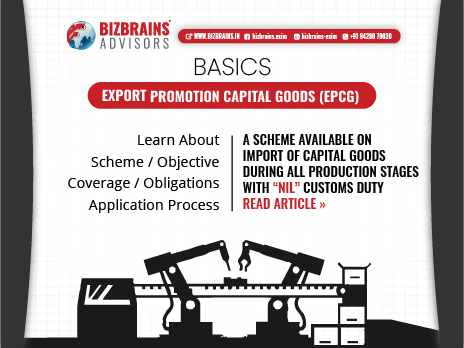

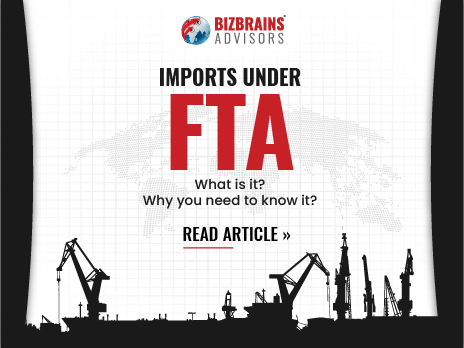

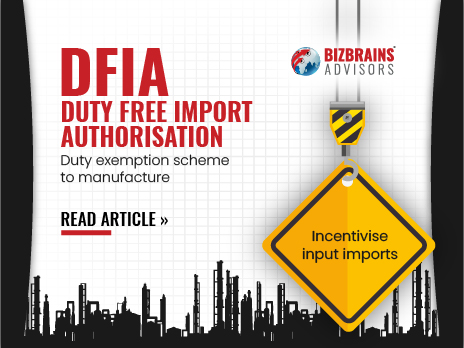

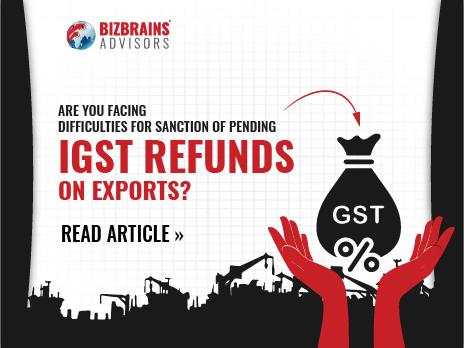


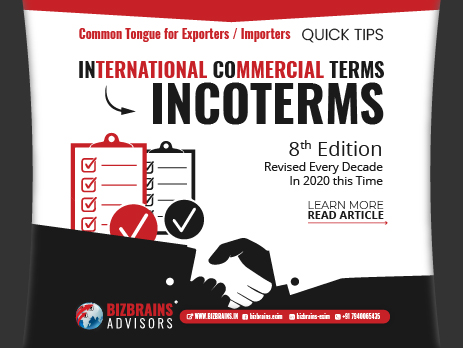
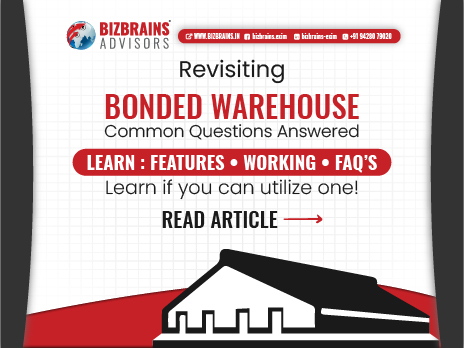
2 Responses